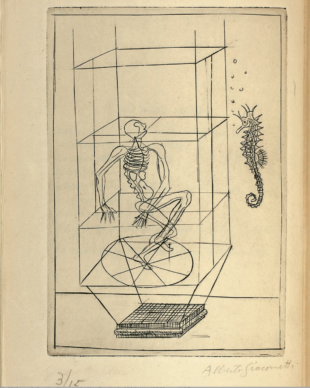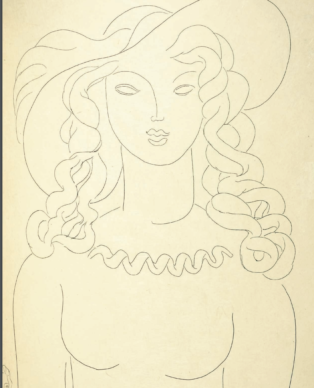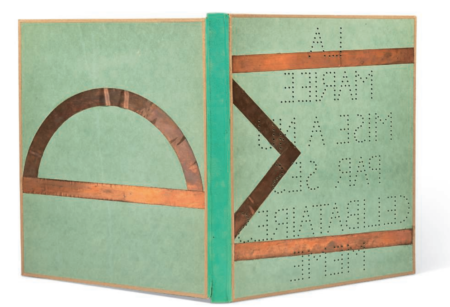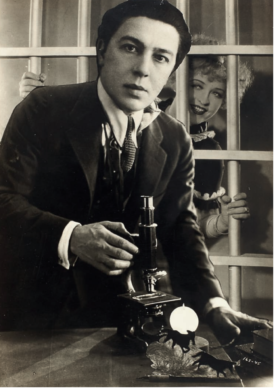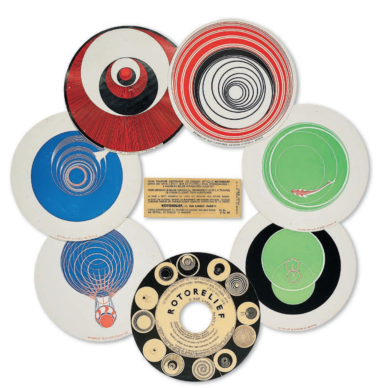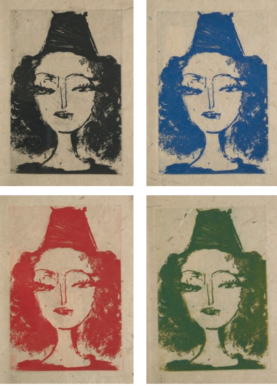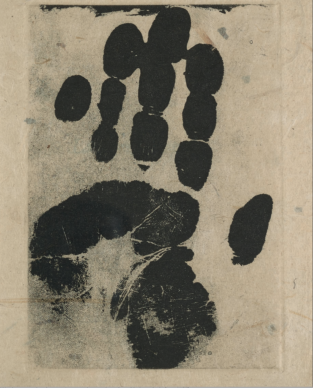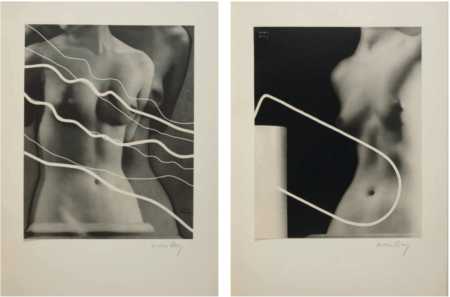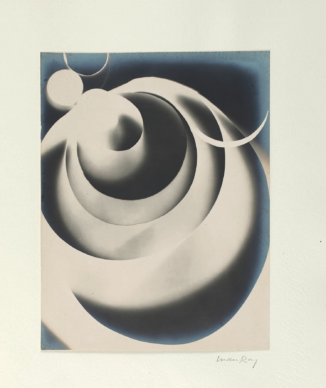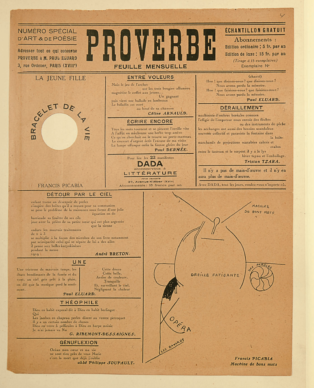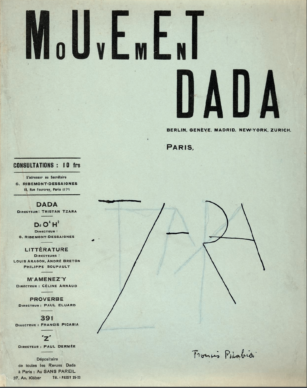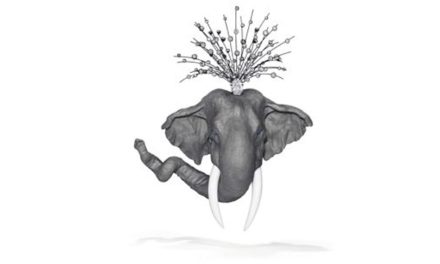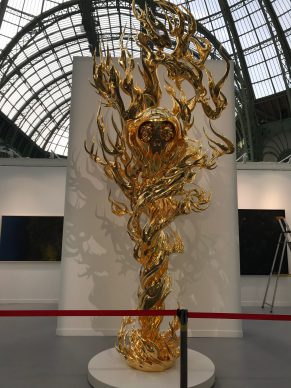Surrealism and Dada
Surrealism and Dada were movements that radically revolutionized not just the art world but also our general ways of thinking, dreaming and writing.
Intellectual revolutions
If you want to possess testaments to this kind of human advancement, in other words if you’re a collector, you can of course buy the paintings of Picabia or Max Ernst, the photographs of Man Ray or the sculptures of Jean Arp. You’ve still got to be able to afford it, though, given the fact that members of these movements have seen the value of their art rise considerably in recent years. But if you’re interested in intellectual revolutions which have shaped the world then there is another, less expensive solution: documents.
Paul Destribats
Paul Destribats (1926-2017) was probably the most experienced amateur in this field in the world. As soon as he had the necessary means, he started collecting papers documenting the avant-garde movements, from the Italian futurists (1909) to the movements of the 1970s.
Bernard Blistène
As Bernard Blistène, the director of the Centre Pompidou who reserves a deep admiration for the collector, explains: “Paul Destribats divided his methodical quest into three categories: the journal-manifestos, first editions and what he referred to as ‘petits papiers’, programmes, invitations, leaflets, which also document these creations.”
Sold to Centre Pompidou
In 2006 Paul Destribats sold the first category to the Centre Pompidou for 3.8 million euros, comprising 1003 periodicals pertaining to the sphere of the Dadaists, surrealists etc.
A dation?
The 15,000 miscellaneous documents on this topic could be the subject of a dation (a donation in lieu of the payment of death duties) but the Centre Pompidou, who are particularly interested, have not yet received the application dossier.
Russian avant garde
Furthermore, a full set dedicated to the Russian avant-garde has been reserved for a private sale at Christie’s apparently with a value of 3 million euros.
3 sessions
So lastly the books and manuscripts are being put up for auction, still with Christie’s in Paris, in three sessions between now and 2020, in chronological order.
From 3 to 5 July
The first from 3 to 5 July, estimated at nearly 5 million euros, is without doubt the most significant, mainly due to Destribats’ great passion in this area: Dada and Surrealism.
Manager of Rio’s first Bossa Nova club
I met him in 2008 at his apartment on the banks of the Seine. With his snowy white hair, powerful gaze, and direct way of speaking, this gentleman who had an extraordinary life – he alternately worked as a diamond dealer, the manager of Rio’s first Bossa Nova club, and a financier in Paris – was voluble on the subject of his library.
Archivist
Incidentally, he preferred to be described as an archivist rather than a collector. There were very few paintings at his home, but his walls were lined with large perfectly filed sets of shelves containing all his treasures great and small, which he catalogued every afternoon with the help of a colleague.
The mask of André Breton
Above one of his bookcases he had placed a mask of the face of André Breton, the theorist of surrealism, who seemed to preside over the collector’s activities.
With my eyes closed
“From time to time he watches me, he inspires me. So do the books. I know where everything is with my eyes closed.” And adding to that: “Breton was a major advocate for intellectual progress. Surrealism is half a century of thought. I saw him occasionally in Paris, at the Café des 2 Magots or at Lipp. But I never spoke to him. I was very aware of our respective places.”
The numbers
For the archivist, Breton was “2,200 files”. Destribats liked numbers: “In terms of the Futurists my library is more extensive than those in the Italian museums: 160 document-manifestos. Dada and surrealism? I’ve loaned 200 documents to the “Dada” exhibition at the Centre Pompidou, plus 100 to the Picabia retrospective at the Musée d’Art Moderne de la Ville de Paris, and 80 to the Pompidou exhibition “La révolution surréaliste” (The Surrealist Revolution).”
3 catalogues
The 3 Christie’s catalogues contain 637 lots classified in chronological order by the experts he appointed before his death, Claude Oterelo and Jean-Baptiste de Proyart, which give a good idea of the evolution of these movements.
André Breton
Jean-Baptiste de Proyart highlights that “the sale stands out primarily for the great works by André Breton”. The lot with the highest estimate, 200,000 euros, contains corrected proofs of the 1924 Surrealism Manifesto by Breton, enriched with original collages and handwritten letters. But we also find a copy of the work in its original edition with a message (inscription) to the surrealist poet Paul Eluard (estimate: 20,000 euros). And also the second Surrealism Manifesto from 1930 with a message to the bookbinder Paul Bonet, bound by Bonet himself with a photo of a “bleeding hand” on the cover (estimate: 80,000 euros).
More affordable
In more affordable territory there are handwritten letters by André Breton describing the movement’s key figures, estimated from 500 euros.
Man Ray
Revising our history of modern art we note that the contemporary photographer Robert Mapplethorpe was able to find a spiritual father in Man Ray. See the four extremely sexual photographs that accompany the book with the fascinating “1929” binding with poems by Louis Aragon and Benjamin Péret.
Pablo Picasso
We can recall Picasso’s proximity to surrealism. In 1936 he illustrated Eluard’s poems in a collection entitled “La barre d’appui” with etchings in three colours depicting a woman’s face but also the imprint of his hand (estimate: 100,000 euros).
Alberto Giacometti
According to the catalogue, the first etching Alberto Giacometti ever made was in 1933 to illustrate a book by the Dadaist turned Surrealist René Crevel, “Les pieds dans le plat”, estimated at 40,000 euros.
Francis Picabia
And for those who didn’t know, the great painter Francis Picabia also wrote poetry. In the 1920s, this man who loved women scrawled a little poem on a scrap of paper destined for a certain Jacqueline, which starts like this:
“L’unique eunuque regarde l’unique nuque nue, dont les cils palpitants se haussent jusqu’au sacrifice (…)”
These handwritten words, which also belong to the history of art, are estimated at 700 euros.
No english translation
It’s unfortunate that the Christie’s catalogue has no English translation, since the subject is clearly of international interest.
From 3 to 5 July. Paris. www.christies.com
Donating=Supporting

Support independent news on art.
Your contribution : Make a monthly commitment to support JBH Reports or a one off contribution as and when you feel like it. Choose the option that suits you best.
Need to cancel a recurring donation? Please go here.
The donation is considered to be a subscription for a fee set by the donor and for a duration also set by the donor.






